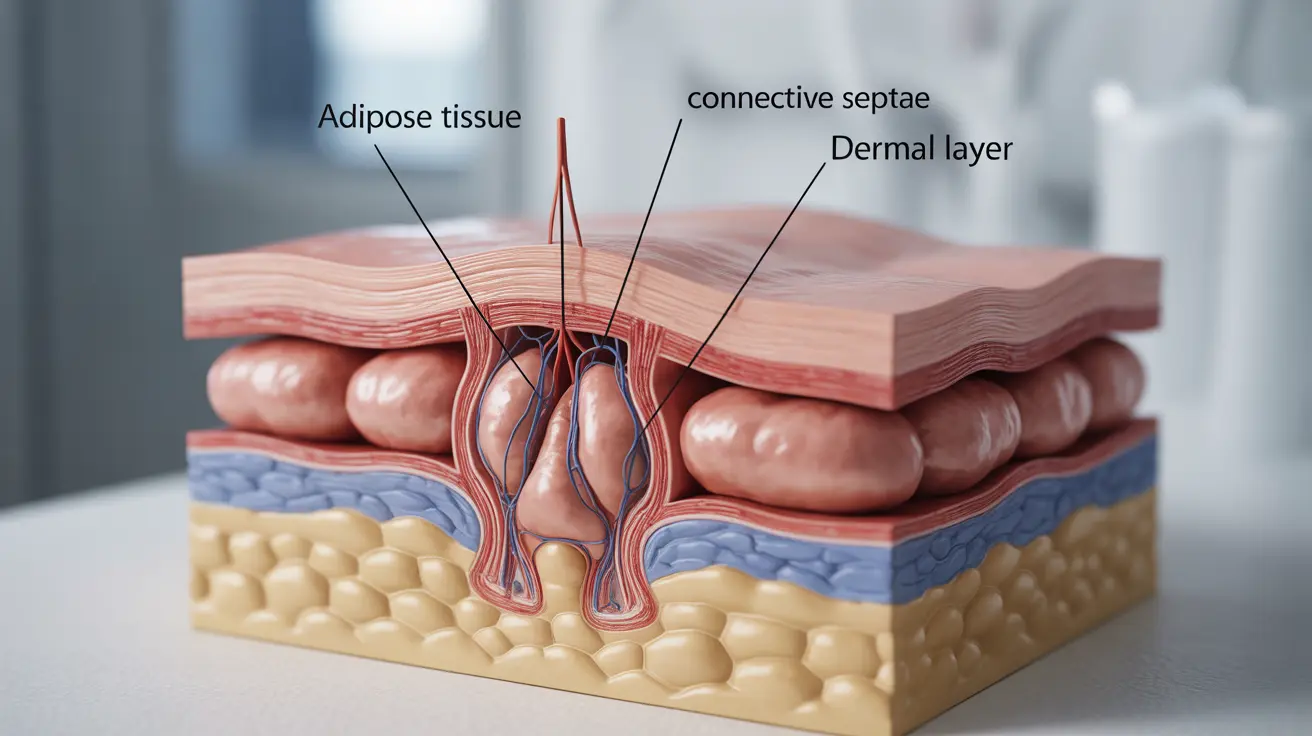Cellulite is a common cosmetic concern that affects millions of people worldwide, particularly women. This dimpled, orange peel-like appearance of the skin can be frustrating for many individuals, leading them to seek various treatments and remedies. In this comprehensive guide, we'll explore the causes of cellulite, effective treatment options, and lifestyle changes that may help reduce its appearance.
Understanding cellulite is the first step in addressing this prevalent skin condition. By delving into its origins, examining available treatments, and considering preventive measures, we can empower ourselves to make informed decisions about managing cellulite and improving our overall skin health.
What Causes Cellulite?
Cellulite occurs when fat deposits push through the connective tissue beneath the skin, creating a dimpled appearance. Several factors contribute to its development:
Hormonal Influences
Hormones play a significant role in cellulite formation. Estrogen, insulin, and thyroid hormones are particularly influential in the development of cellulite. These hormones can affect fat storage, circulation, and the strength of connective tissues.
Genetics
Your genetic makeup can predispose you to cellulite. Factors such as gender, race, metabolism, and distribution of fat can all be influenced by genetics, making some individuals more prone to cellulite than others.
Lifestyle Factors
Certain lifestyle choices can exacerbate cellulite formation. These include:
- Poor diet high in processed foods and saturated fats
- Lack of physical activity
- Smoking
- Excessive alcohol consumption
- Dehydration
Gender Differences
Cellulite is more common in women than in men due to differences in fat distribution and connective tissue structure. Women typically have more fat in areas prone to cellulite, such as thighs and buttocks, and their connective tissue is arranged in a way that allows fat to protrude more easily.
Effective Treatments for Reducing Cellulite
While there's no permanent cure for cellulite, several treatments can help reduce its appearance:
Topical Treatments
Creams and lotions containing ingredients like caffeine, retinol, and herbal extracts may temporarily improve the appearance of cellulite by promoting circulation and collagen production. However, results are often modest and short-lived.
Massage and Mechanical Treatments
Techniques such as endermologie and radiofrequency therapy can help break down fat deposits and improve circulation. These treatments often require multiple sessions for noticeable results.
Laser Therapy
Advanced laser treatments like Cellulaze target the fibrous bands beneath the skin, helping to smooth out dimples and improve skin texture. While more invasive, these treatments can offer longer-lasting results compared to topical options.
Acoustic Wave Therapy
This non-invasive treatment uses sound waves to break down cellulite-causing structures and stimulate collagen production. Multiple sessions are typically required for optimal results.
Lifestyle Changes to Prevent and Reduce Cellulite
Adopting a healthy lifestyle can significantly impact the appearance of cellulite:
Balanced Diet
Eating a diet rich in fruits, vegetables, lean proteins, and whole grains can help maintain a healthy weight and improve skin health. Staying hydrated is also crucial for maintaining skin elasticity and promoting circulation.
Regular Exercise
Incorporating both cardiovascular exercise and strength training into your routine can help reduce body fat, build muscle, and improve skin tone. Focus on exercises that target areas prone to cellulite, such as squats, lunges, and leg lifts.
Stress Management
Chronic stress can contribute to hormonal imbalances that exacerbate cellulite. Practices like yoga, meditation, and deep breathing exercises can help manage stress levels and promote overall well-being.
Proper Skincare
While not a cure, maintaining good skin health through regular exfoliation, moisturizing, and sun protection can improve skin texture and appearance, potentially minimizing the visible effects of cellulite.
Frequently Asked Questions
What are the most effective treatments for reducing the appearance of cellulite?
The most effective treatments for cellulite include laser therapy (such as Cellulaze), acoustic wave therapy, and a combination of massage and radiofrequency treatments. These options target the underlying structures that cause cellulite and can provide longer-lasting results compared to topical treatments alone.
Can lifestyle changes, such as diet and exercise, help prevent or reduce cellulite?
Yes, lifestyle changes can significantly impact cellulite. A balanced diet rich in nutrients, regular exercise (especially strength training), staying hydrated, and maintaining a healthy weight can all help prevent and reduce the appearance of cellulite. These changes improve overall skin health, reduce fat deposits, and enhance circulation.
What are the main causes of cellulite, and how does it differ between men and women?
The main causes of cellulite include hormonal factors, genetics, lifestyle choices, and the structure of connective tissue beneath the skin. Women are more prone to cellulite due to differences in fat distribution and connective tissue arrangement. Estrogen plays a significant role in cellulite formation, which is why it's less common in men.
How does laser therapy, like Cellulaze, compare to other cellulite treatments in terms of effectiveness and cost?
Laser therapy, such as Cellulaze, tends to be more effective than many other cellulite treatments as it targets the underlying causes of cellulite, including fibrous bands and fat deposits. It often provides longer-lasting results but is generally more expensive and invasive than topical or mechanical treatments. The cost can range from $3,000 to $6,500 per treatment area, while results can last a year or more.
Are there any natural or home remedies that can effectively reduce the appearance of cellulite?
While natural remedies may not eliminate cellulite entirely, some can help improve skin appearance. Dry brushing to stimulate circulation, coffee scrubs for temporary tightening, and staying hydrated can all contribute to healthier-looking skin. However, these methods are generally less effective than professional treatments and should be combined with a healthy lifestyle for best results.
In conclusion, while cellulite is a common and often stubborn concern, understanding its causes and exploring various treatment options can help individuals make informed decisions about managing its appearance. Combining targeted treatments with healthy lifestyle choices offers the most comprehensive approach to addressing cellulite and promoting overall skin health.




